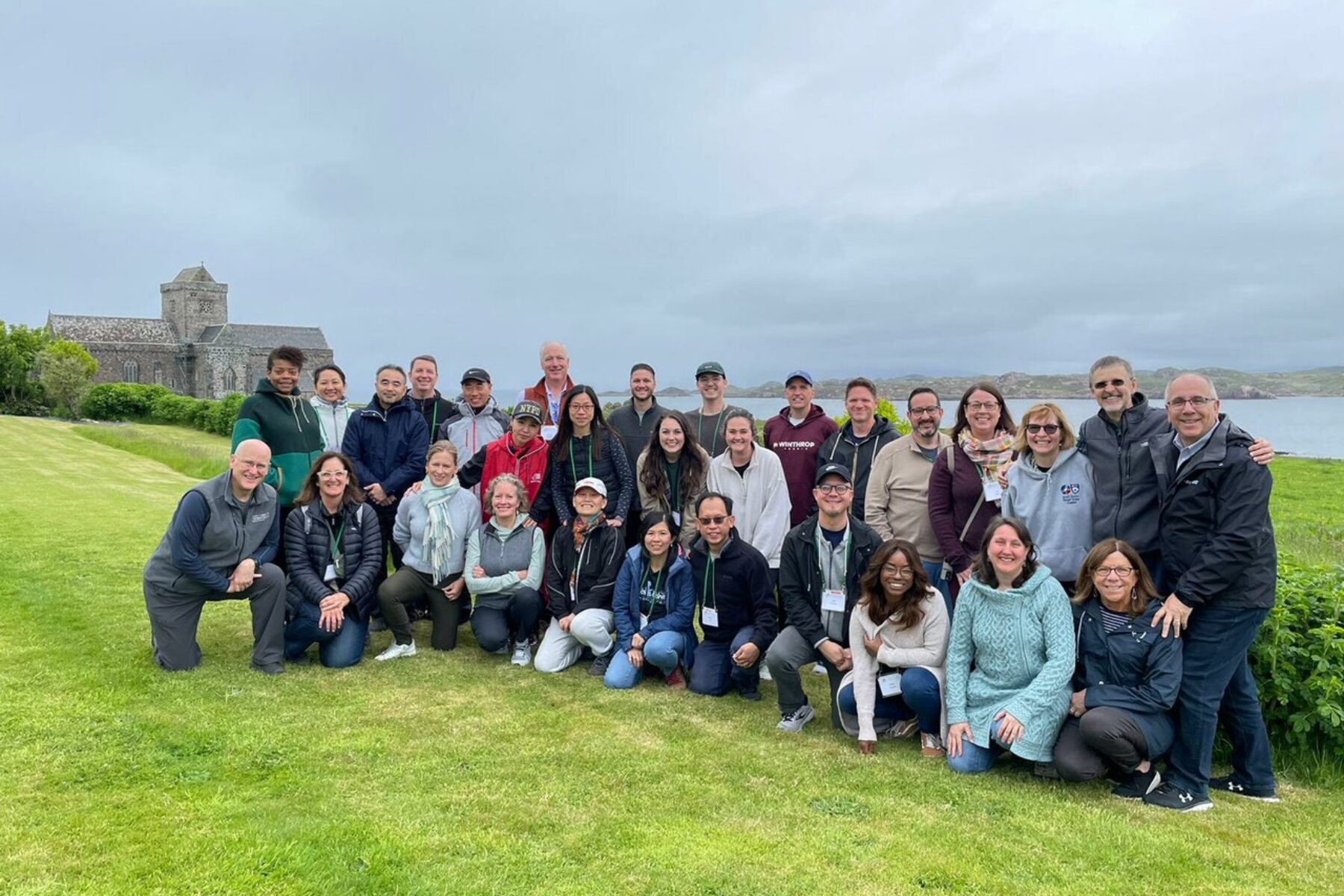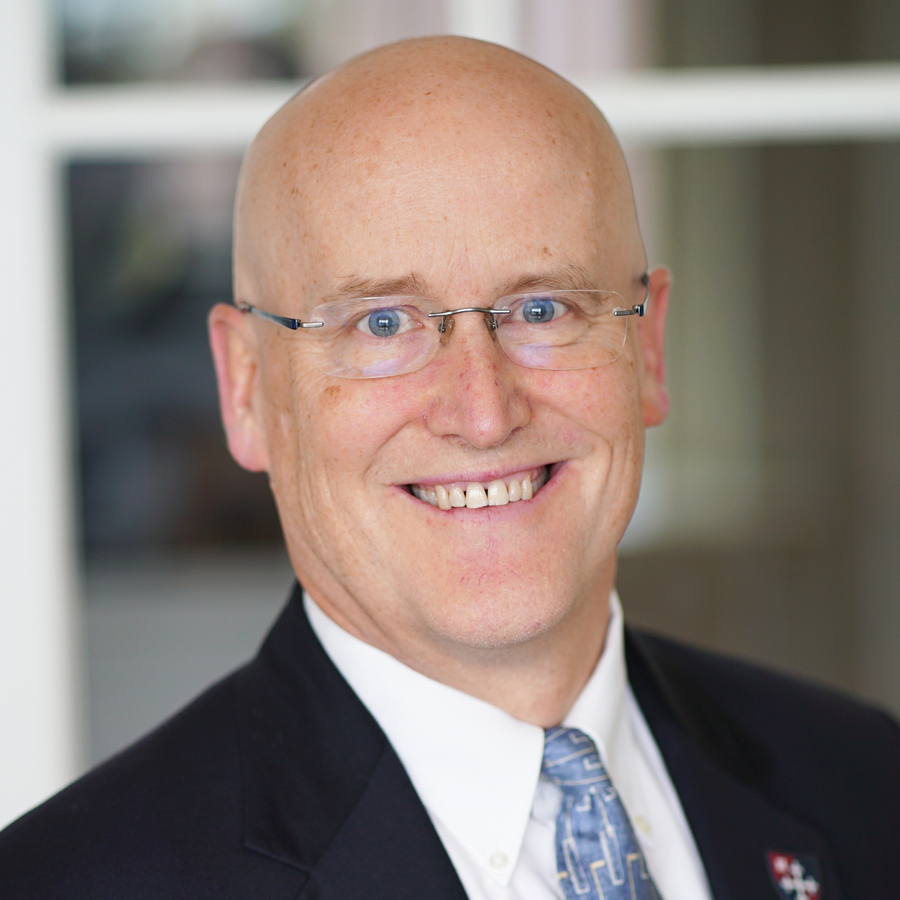How The Celtic Church Saved the West
 Dr. David Currie
Dr. David Currie
When you hear the term “Celtic,” what comes to mind? Boston’s basketball team? A Glasgow soccer team? Let’s think more spiritually than sports. Perhaps such themes as “thin places” or “creation celebration” or “womanist empowerment” or a “way of evangelism” come to mind. All of these references spring from this widely-used and little-understood iteration of early Christianity.
However, when I hear “Celtic” (hard “C”) I think of . . . tidal pools. This is not simply because the coasts of the Celtic lands of Ireland, Scotland, and Northumbria remind me of those here in New England: jagged and rocky with wide swings of high and low tides, leaving many small and large pools of water trapped by rocks and sand. The metaphor speaks to me of the persistence of Christ-centered communities on the margins, such as those that thrived in the locations mentioned above, and the resultant perspective they bring that helps recapture the gospel and renew the Church even amid seemingly post-Christian cultures. Unlike the proverbial frog in the kettle whose demise comes through gradual conformity to a toxic environment, the church in the tidal pool is insulated from highly influential sub-Christian and anti-Christian currents in dominant cultures.
The Celts became a marginal people as the rise of the Roman Empire pushed them out of their original homelands in Asia Minor and central Europe to the fringes of the Western world: Ireland, Scotland, Northumberland, Wales, Cornwall, even Brittany and Galicia. For all of their beauty, these fierce landscapes were less desirable places to live, dissuading invaders from wanting to take the land, which allowed a distinctive Celtic culture to survive despite interacting with more dominant imperial cultures.
 One element of Roman culture that was embraced by the Celts was Christianity. As the Roman Empire receded like an ebbing tide in the fifth century, leading to a resurgence of paganism in southern Britain and central Europe, the gospel and orthodox faith survived on its edges among Celtic peoples, like forms of sea life that survive in tidal pools at low tide. Indeed, some forms of sea life not only survive but thrive as isolation allows them to grow with less threat from predators. Such was the case of these marginal Christian communities.
One element of Roman culture that was embraced by the Celts was Christianity. As the Roman Empire receded like an ebbing tide in the fifth century, leading to a resurgence of paganism in southern Britain and central Europe, the gospel and orthodox faith survived on its edges among Celtic peoples, like forms of sea life that survive in tidal pools at low tide. Indeed, some forms of sea life not only survive but thrive as isolation allows them to grow with less threat from predators. Such was the case of these marginal Christian communities.
In a similar way, isolation enabled Christianity to survive and thrive among the Celts, with Celtic cultural distinctives contributing to its shape. Poets and artists adapted Celtic forms to create compelling expressions of the Gospel in song and stone, ultimately bearing fruit in beautifully and intricately illustrated manuscripts such as the Lindisfarne Gospels and the Book of Kells. (As will be evident in tomorrow’s post.) As a result, it is not wrong to designate this distinctive faith expression as “Celtic” Christianity, as long as we remember that Celtic Christians held key doctrinal points in common with most other Christians, then and now.[1] This movement was more about sustaining the faith than inventing a new one.
Celtic monasteries were the missional tidal pools from the fifth to eighth centuries. They kept faith alive and growing amid their wider non-Christian cultural contexts. Like hermit crabs scurrying from one tidal pool to another, Celtic monastic missionaries re-evangelized formerly Christian areas such as southern Britain and central Europe (as noted above), while forging new footholds in unevangelized areas, establishing healthy, self-reproducing Christian communities
In the mid-fifth century, Patrick, an English, nominal Christian kidnapped by Irish pirates, came to deep faith in captivity and sensed a call to return and evangelize the pagan Irish. In the mid-sixth century, the Irish monastic leader Columba established the Island of Iona as a mission base to do the same in Scotland. In the first half of the seventh century, Aidan headed out from Iona to the Holy Island of Lindisfarne to re-evangelize Northumbria in Northeast England, succeeded by Cuthbert who carried out the mission during the remainder of the seventh century.
Isolated geography supported missional theology: Celtic monks gathered to scatter and scattered to gather. While they maintained their own rigorous rule of life of prayer and asceticism, their purpose in doing so was not primarily to escape from the world to save one’s own soul. Rather, they detached from the world to sustain one’s soul while banding together to seek and to save other souls. In this sense, Celtic monks were more like the outward-focused Franciscans than self-preserving Benedictines, suggesting that those ministering in our post-Christian world might consider pursuing the “Columba Option” instead of the “Benedict Option!”[2]
As tempting as it might be to build walls around a tidal pool to “preserve” it by not allowing any of its water to seep out or become “contaminated” by fresh influxes, such a strategy will ultimately lead it to dry up, and everything in it to die. The unique ecosystem of a tidal pool requires inflow and outflow, bringing life to the tidal pool and to a wider body of water as creatures that grow to maturity in the pool are strong enough to survive and reproduce outside of it. In a similar way, Celtic missional models of extending hospitality to the surrounding community along with holding to a rigorous rule of life for its members allowed outsiders to belong before they believed, and then to believe in a disciplined way that resisted cultural accommodation and reproduced in new environments.
The continued relevance of these Celtic mission leaders, whose lives embodied the basic spiritual rhythms of word, prayer, and reflection,[3] led Steve Macchia and me (co-mentors for the Spiritual Formation for Ministry Leaders Doctor of Ministry track) to hold our second residency in the U.K., where we led our students in walking in the footsteps of Columba on Iona and of Aidan and Cuthbert on Lindisfarne.
History came alive as we prayed the way these Celtic saints prayed, looking out over the same land and seascapes that they had looked out over, the tidal pools reminding us of the opportunities, as well as the challenges of serving Christ in our current contexts where it seems that the tide of the gospel is ebbing. Our hope is that as a result of this Celtic pilgrimage, these future doctors of the church adapt similar strategies of “gathering to scatter and scattering to gather” to nurture spiritual vitality in their own post-Christian contexts, overflowing with effective ways to re-evangelize from the margins.
Keep reading with a follow-up article from Wendy Murray, contemplating the Columba Option and its namesake
[1] The most significant distinction between the “Celtic” church and the “Roman” church was the dating of Easter.
[2] The Benedict Option refers to the popular book by the same name published in 2018 by Rod Dreher.
[3] Such as were needed to form vibrant Christian communities in hostile environments.
 Dr. David A. Currie is dean of the Doctor of Ministry Program, dean of the Anglican Formation Program, and professor of pastoral theology. He recently co-led a DMin residency in the U.K. tracing the footsteps of Celtic saints. He is the author of The Big Idea of Biblical Worship and the Chaplain of the Learned Kindred of Currie (Clan Currie Society).
Dr. David A. Currie is dean of the Doctor of Ministry Program, dean of the Anglican Formation Program, and professor of pastoral theology. He recently co-led a DMin residency in the U.K. tracing the footsteps of Celtic saints. He is the author of The Big Idea of Biblical Worship and the Chaplain of the Learned Kindred of Currie (Clan Currie Society).